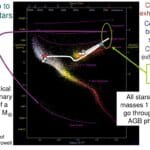This article clarifies the common confusion between two of the night sky’s most recognizable star patterns: Orion’s Belt and the Big Dipper. We’ll explore their unique characteristics, delve into their cultural significance, and provide practical tips for locating them.
Decoding the Night Sky: Constellations and Asterisms
Before we embark on our celestial journey, let’s define some key terms. When we look up at the night sky, we see patterns formed by stars. These patterns can be categorized as either constellations or asterisms. Constellations are officially recognized regions of the sky, much like countries on a map. Asterisms, on the other hand, are smaller, easily recognizable patterns within constellations or sometimes spanning across them, like famous landmarks within those countries. Both Orion’s Belt and the Big Dipper are prominent asterisms, not constellations themselves.
Orion’s Belt: The Hunter’s Mark
Orion’s Belt is part of the Orion constellation, a striking winter constellation depicting a mighty hunter in the night sky. The belt itself consists of three bright stars in a straight line: Alnitak, Alnilam, and Mintaka. Located on the celestial equator, Orion’s Belt is easily visible during winter in the Northern Hemisphere. Interestingly, if you follow the line of the belt down and to the left, you’ll probably find Sirius, the brightest star in the night sky!
The Big Dipper: A Celestial Compass
The Big Dipper, with its distinctive dipper or plough shape, is part of the Ursa Major constellation, also known as the Great Bear. Its seven prominent stars—Alkaid, Mizar, Alioth, Megrez, Phecda, Merak, and Dubhe–form the bear’s tail and hindquarters. Unlike Orion, which is primarily a winter constellation, the Big Dipper is circumpolar for many northern latitudes, meaning it’s visible year-round, circling the North Star, Polaris. Speaking of Polaris, the two stars at the outer edge of the Big Dipper’s “bowl” (Dubhe and Merak) act as “pointer stars.” An imaginary line drawn through them, extending about five times their distance, points almost directly to Polaris, making the Big Dipper a handy celestial navigation tool.
Can You See Both at the Same Time?
Yes, in mid-northern latitudes, you can often see both Orion’s Belt and the Big Dipper simultaneously, particularly during the evenings of late winter and early spring. As Orion sets in the west, the Big Dipper rises in the northeast, creating a brief window where both share the celestial stage. This overlapping visibility can vary based on your exact location and the specific time of year. Some suggest using astronomy apps or star charts to determine the best viewing times in your area.
Myths and Legends Across Cultures
Both Orion’s Belt and the Big Dipper have captured the human imagination for centuries, inspiring myths and legends across diverse cultures. Ancient Greeks envisioned Orion as a powerful hunter, while many Northern Hemisphere cultures saw Ursa Major as a great bear. These star patterns have served as navigational aids, timekeeping tools, and sources of wonder, connecting humanity to the cosmos. There is ongoing research into the cultural impact of these celestial formations, and future discoveries may shed further light on their historical significance.
Finding Your Way Around the Cosmos
Learning to identify Orion’s Belt and the Big Dipper can be a gateway to exploring the night sky. To find Orion’s Belt, look for the hourglass shape of the Orion constellation during winter. The belt forms the middle. The Big Dipper is generally easy to spot in the northern sky. Once you find it, use the pointer stars to locate Polaris.
Beyond the Basics: Ongoing Research and Mysteries
While we know a great deal about these asterisms, ongoing research continues to explore their properties and origins. Scientists are still investigating the distances and relationships between the stars within each asterism. For instance, the proper motion of stars, though seemingly imperceptible over short periods, will gradually reshape the Big Dipper over millennia. There is still debate and active study regarding the effects of light pollution on visibility of faint stars. These investigations remind us that our understanding of the universe is constantly evolving.
Orion’s Belt and the Big Dipper: Not So Close Neighbors
It’s important to clarify that Orion’s Belt and the Big Dipper are completely distinct asterisms residing in different constellations, visible at different times of year, and containing a different number of stars. Confusing them is like mixing up the Eiffel Tower with the Statue of Liberty—both impressive landmarks, but worlds apart. One is a sleek three-star line, and the other a larger seven-star dipper shape, located in separate parts of the sky. Uncover the celestial ballet surrounding the neighbor of ursa major and delve into the swirling mysteries behind Jupiter’s beard.
By understanding the differences and unique characteristics of Orion’s Belt and the Big Dipper, we can deepen our appreciation for the wonders of the night sky. So, step outside on a clear night, look up, and let these celestial companions guide you on your own exploration of the cosmos.
- SYBAU See You Baby Meaning: Gen Z Slang Evolves - July 1, 2025
- Unlock Your Inner Youth: Lifestyle Secrets for a Vibrant Life - July 1, 2025
- Decode SYBAU Meaning: Gen Z Slang Explained - July 1, 2025







1 thought on “Orion’s Belt vs. the Big Dipper: Two Celestial Icons Explained”
Comments are closed.